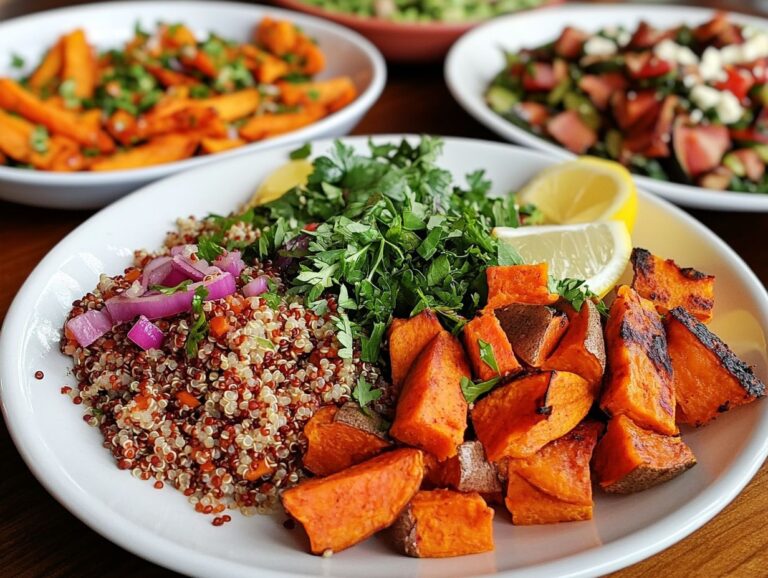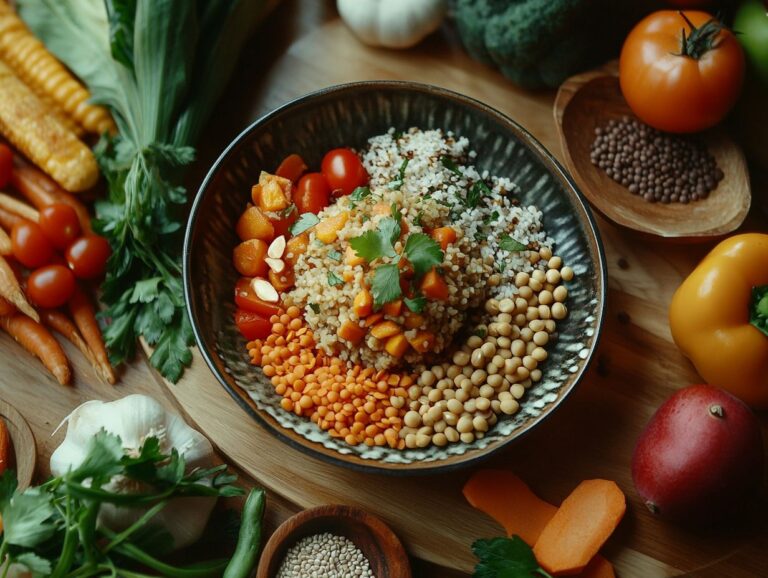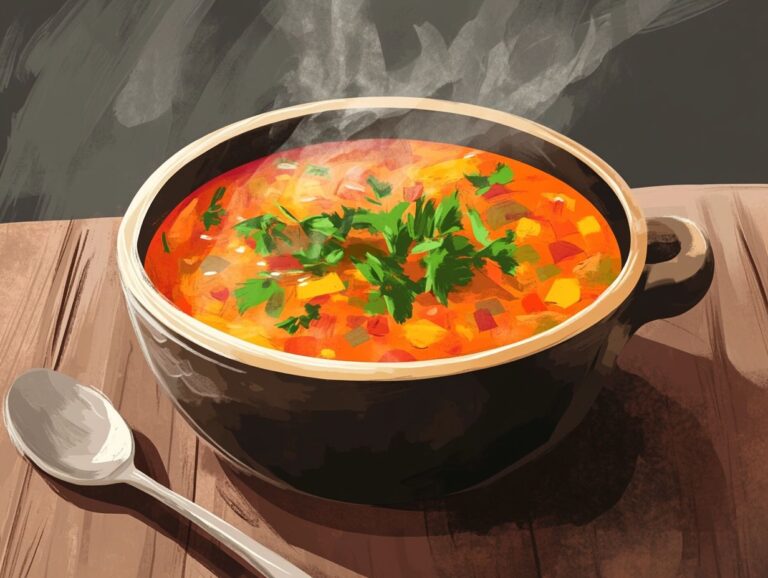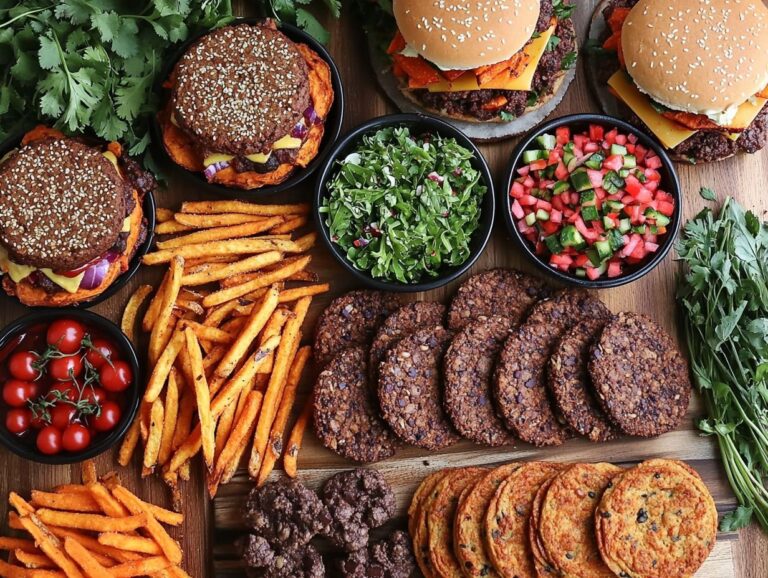The significance of maintaining kidney health is crucial for overall well-being, and diet plays a vital role in this regard. Understanding the role of oxalates in kidney function and their contribution to stone formation is essential. Adopting a low oxalate vegan diet can provide numerous benefits, as it is rich in nutrients that support kidney health. This includes recipes for a low oxalate vegan diet and suggestions on how to seamlessly incorporate these meals into your daily life.
Understanding Oxalates and Kidney Health in a Plant-Based Diet
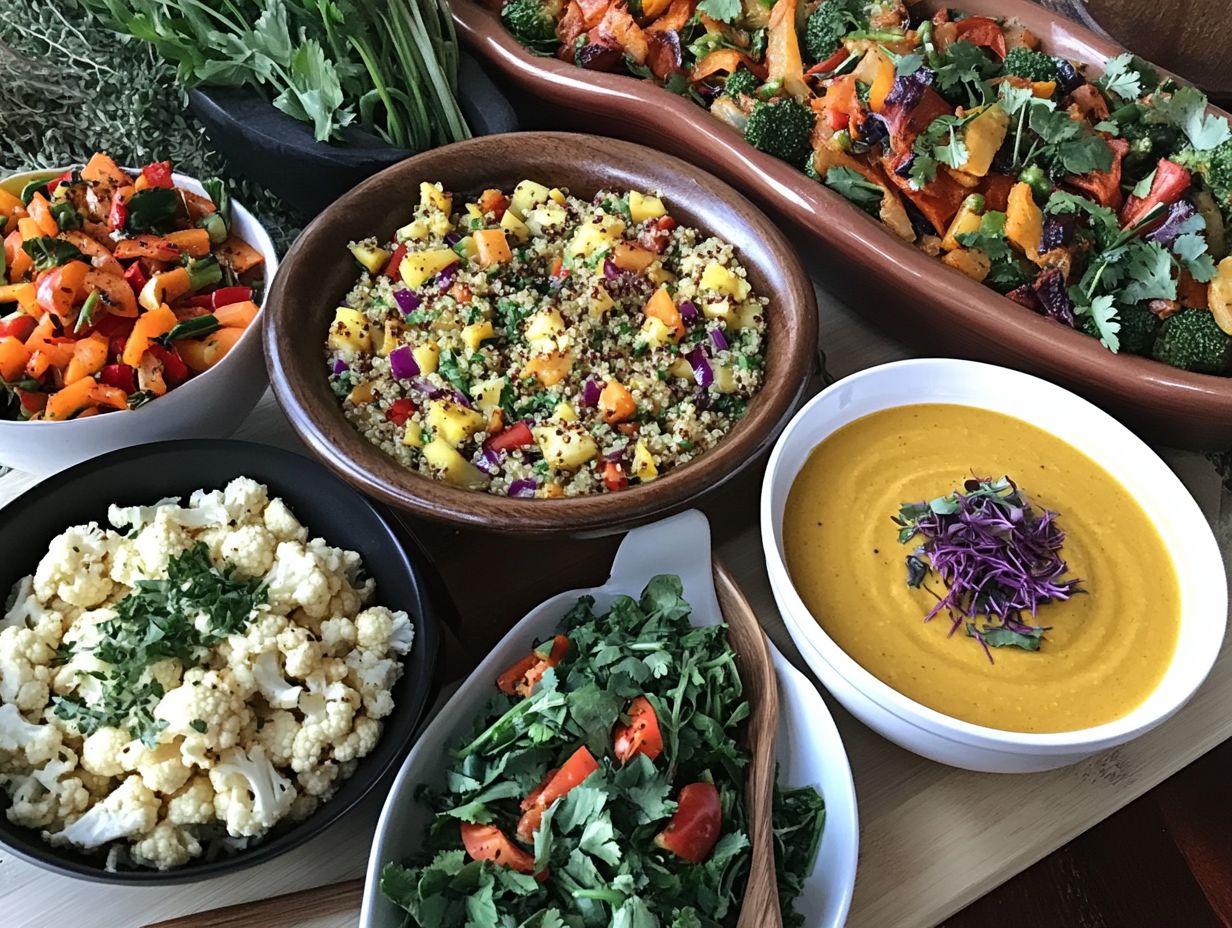
Understanding the relationship between oxalates and kidney health is essential for those looking to preserve proper kidney function and prevent issues such as kidney stones, especially when considering a plant-based diet rich in nutrient-dense foods.
Oxalates are naturally occurring substances found in a variety of plant-based foods. While oxalates can offer benefits for certain individuals, elevated levels in the body can pose significant risks, particularly for patients with dietary restrictions, such as those following low oxalate vegan diets, which focus on minimizing kidney stone formation.
By recognizing which foods are high in oxalate and implementing effective prevention strategies, individuals can manage their kidney health through informed dietary choices, emphasizing kidney-friendly meal planning and natural remedies.
What are Oxalates and How do they Affect the Kidneys?
Oxalates are organic compounds present in many plant-based foods, and understanding their role is essential for those concerned about kidney function and the risk of developing kidney stones.
When consumed in high amounts, oxalates can bind to calcium in the body, potentially leading to reduced calcium absorption and the formation of calcium oxalate stones in the kidneys, which can significantly affect overall digestive and kidney health.
These compounds are commonly found in foods such as spinach, rhubarb, and certain nuts, highlighting the importance of being mindful of dietary choices.
The interaction between oxalates and calcium can pose challenges to digestive health by impacting how nutrients are utilized. Therefore, managing oxalate intake is crucial for maintaining a balanced diet, promoting calcium absorption, and supporting kidney health, particularly for individuals at risk of kidney issues.
By staying informed about the oxalate levels in their food, individuals can make better dietary choices that support kidney health and promote a harmonious relationship among all the nutrients consumed.
The Benefits of a Low Oxalate Vegan Diet
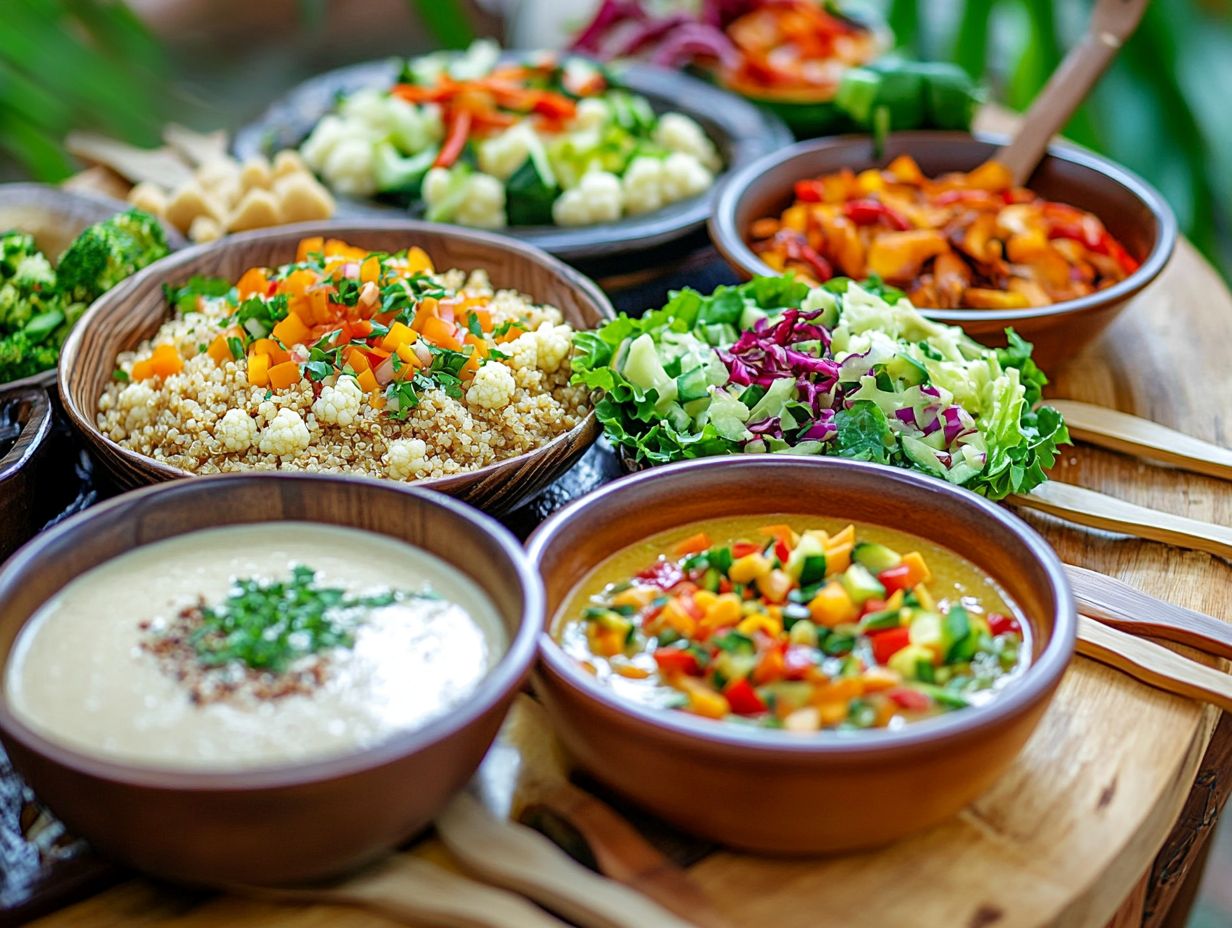
A low oxalate vegan diet offers numerous health benefits, particularly for individuals seeking to enhance kidney health, reduce the risk of developing kidney stones, and improve overall renal health through the inclusion of alkaline foods and anti-inflammatory properties.
This diet, which emphasizes whole plant foods, provides abundant sources of fiber, antioxidants, and essential nutrients while minimizing the potential complications associated with oxalate consumption, contributing to better digestive health and wellness.
Additionally, a low oxalate vegan diet aligns with the principles of healthy eating and sustainable food practices, making it a valuable part of a wellness-focused lifestyle that incorporates food variety and culinary creativity.
Improving Kidney Function and Reducing Risk of Kidney Stones
Kidney function can be enhanced, and the risk of kidney stones can be reduced by following a low-oxalate diet, prioritizing hydration, and employing proper food preparation methods. Consuming kidney-friendly meals that include low-oxalate vegetables, legumes, and whole grains can help individuals decrease their risk of stone formation while promoting overall kidney health and wellness, further supported by regular use of herbal remedies and mindful eating practices.
It is advisable to include low-oxalate vegetables such as nutrient-rich:
- Cauliflower
- Broccoli
- Carrots
in daily meals. Additionally, staying well-hydrated with adequate amounts of water, herbal teas, and natural fruit-infused drinks is crucial for diluting urinary compounds that can lead to stone formation.
Preparing large batches of smoothies with kidney-friendly fruits like blueberries and apples offers quick and easy access to nutritious options while ensuring proper hydration. Furthermore, limiting sodium intake and processed foods contributes to improved kidney function, making it an essential aspect of a comprehensive wellness approach that emphasizes nutritional balance and dietary guidelines.
Key Nutrients to Include in Low Oxalate Vegan Recipes
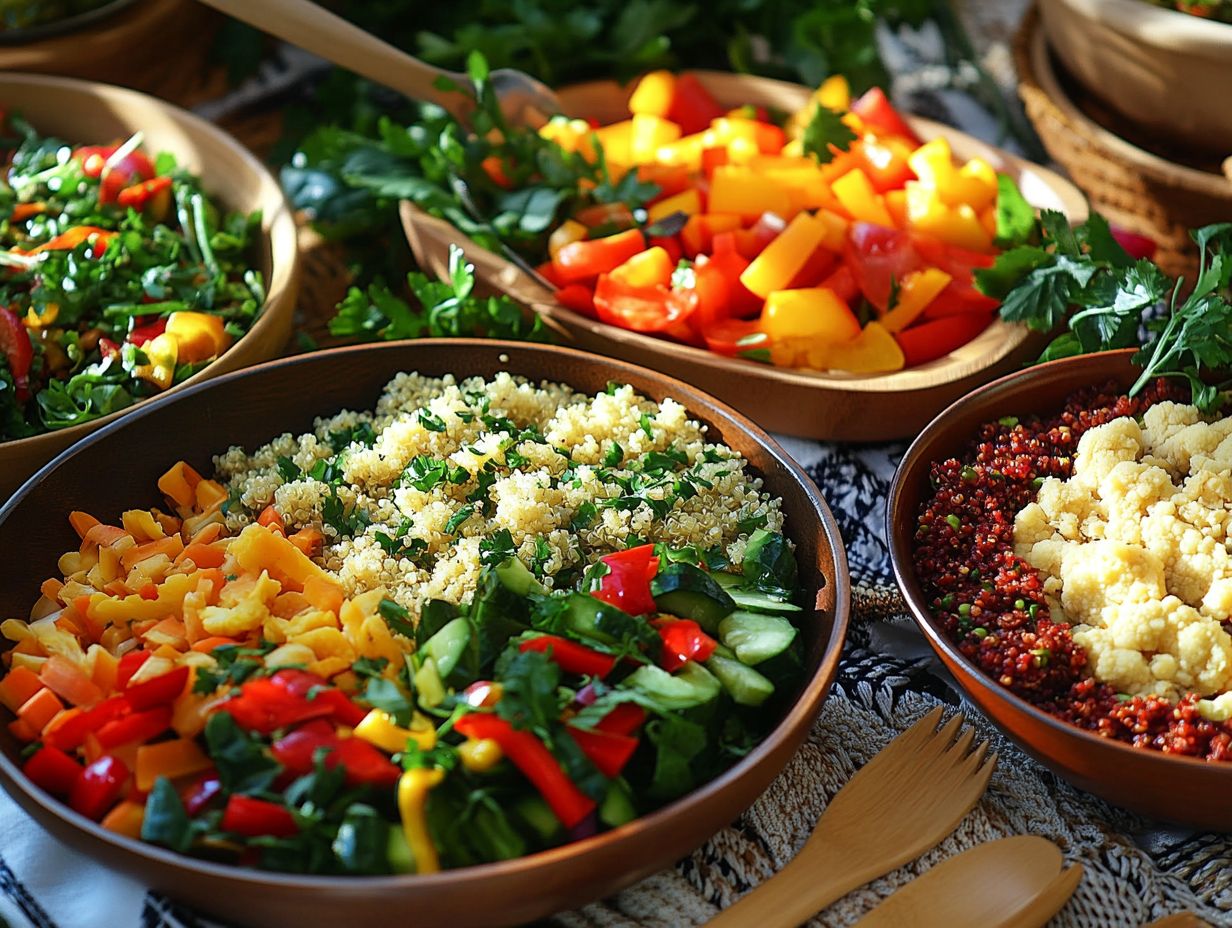
Low oxalate vegan recipes are rich in key nutrients that promote kidney health. Essential nutrients such as calcium, vitamin C, and magnesium are included in these meals, as they play important roles in nutrient absorption, support proper kidney function, and help prevent the formation of kidney stones, all while contributing to a balanced vegan nutrition profile.
These key nutrients are vital for maintaining a balanced diet for vegans. Below are some examples of whole foods that are rich in these important nutrients and can be incorporated into low oxalate vegan recipes while avoiding high oxalate foods, ensuring comprehensive plant protein sources and mineral intake.
Plant-based Sources of Calcium, Vitamin C, and Magnesium
Plant-based sources of calcium, vitamin C, and magnesium are essential for maintaining health and preventing kidney stones while adhering to a low oxalate diet that incorporates vegan meal options and nutrient density.
Dark leafy greens, tofu, and almonds are excellent sources of calcium, while orange and berry fruits are rich in vitamin C. Additionally, beans and seeds provide magnesium, which is vital for healthy kidney function.
Incorporating these nutritious options into daily meals is both easy and delicious. For instance, kale or bok choy can be added to stir-fries for a fresh flavor and an extra boost of calcium.
A citrus salad featuring orange segments and strawberries is a delightful way to obtain vitamin C. For breakfast, pumpkin seeds can be sprinkled on yogurt or oatmeal to increase magnesium intake.
Moreover, adding tofu to smoothies or soups can create a creamy base while supplying essential nutrients. These simple additions make it easier to lead a balanced and health-conscious lifestyle that embraces the principles of sustainable eating and culinary techniques.
Delicious and Nutritious Low Oxalate Vegan Recipes
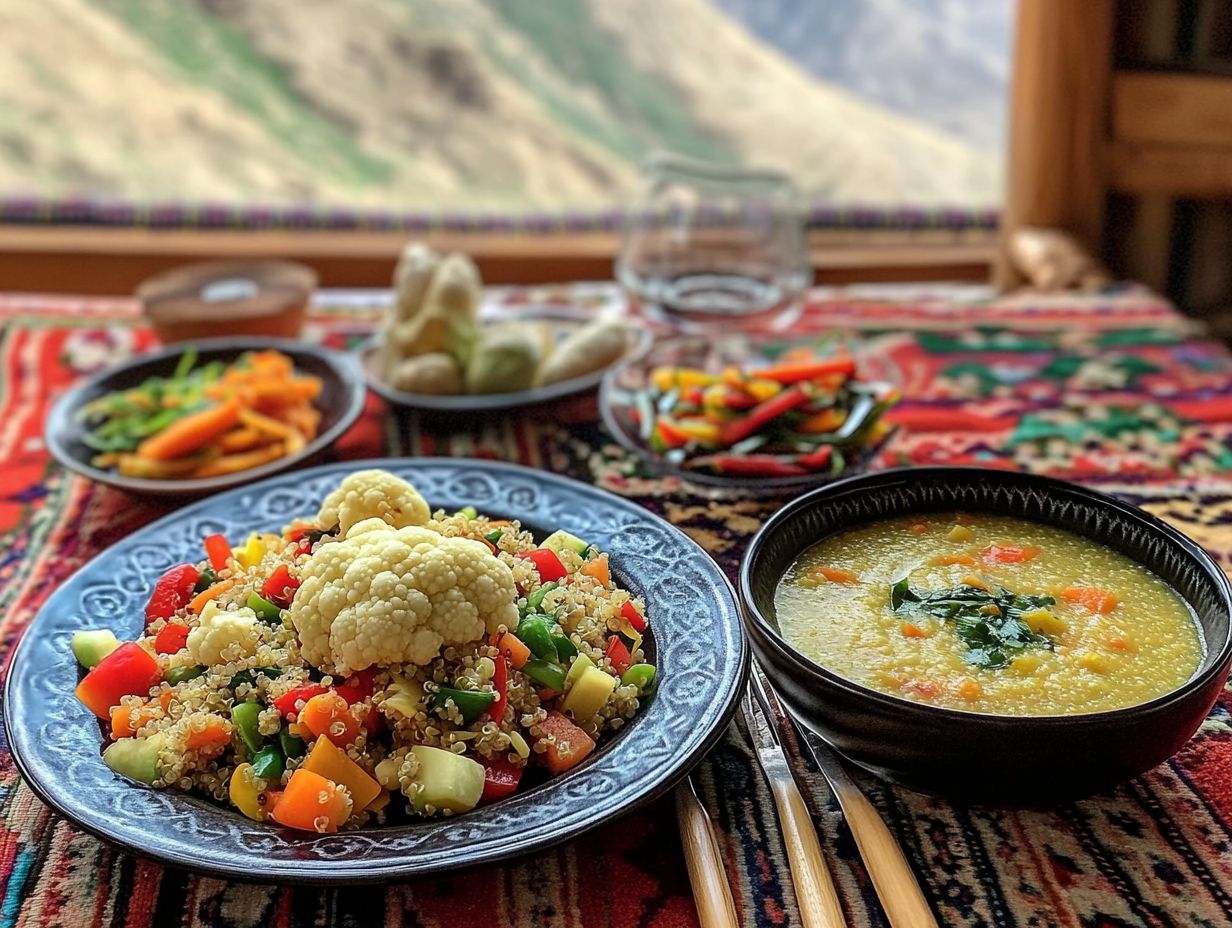
There are numerous enjoyable and nutritious ways to create low oxalate vegan recipes. Utilizing a variety of cooking methods, such as steaming, baking, and pressure cooking, can enhance the flavor of the meals, allowing for diverse recipe customization and exploration.
By incorporating diverse ingredients like legumes, grains, and seasonal vegetables, you can ensure a wide selection of healthy low oxalate vegan recipes that can easily be adapted for breakfasts, lunches, dinners, and snacks, supporting a holistic nutrition approach.
Breakfast, Lunch, Dinner, and Snack Ideas
Low oxalate recipes for breakfast, lunch, dinner, and snacks make it easy to enjoy a variety of meals throughout the day. Starting the day with a chia seed pudding topped with low oxalate fruits is an excellent choice. Contrary to popular belief, quinoa is a low oxalate food that serves as a nutritious base for a salad packed with a variety of nutrient-rich vegetables at lunch, enhancing meal diversity and flavor profiles.
For dinner, a hearty lentil stew provides comfort and good nutrition, especially on busy days. Roasted carrots or sweet potato cubes make healthy, easy-to-prepare snacks that can be enjoyed on the go without raising oxalate levels, offering delicious savory dishes and health benefits.
Incorporating a range of ingredients into these meals can enhance their health benefits even further. For instance, almond milk can be used as a low oxalate alternative to regular milk in chia seed pudding, and you can add low oxalate fruits like blueberries and strawberries for added flavor and antioxidants.
For a lunchtime quinoa salad, consider adding grilled chicken or tofu for protein, along with a sprinkle of herbs for extra taste.
To add flavorful variations to your lentil stew at dinnertime, try incorporating different spices that won’t increase oxalate levels. For a satisfying and healthy snack, enjoy crunchy bell pepper strips or apple slices with almond butter.
Encouraging creativity in meal preparation can keep mealtimes exciting while promoting a healthy lifestyle.
Tips for Incorporating Low Oxalate Vegan Meals into Your Diet
Strategies for low oxalate vegan meal prep and grocery shopping include selecting seasonal ingredients, employing suitable cooking methods, and replacing high oxalate foods with healthier alternatives.
These practices can help individuals maintain a balanced diet and enhance their overall well-being while adhering to dietary restrictions, supporting lifestyle changes and emphasizing the importance of food education and self-care.
Meal Planning and Grocery Shopping Strategies
Meal planning and grocery shopping strategies are essential for successfully following a low oxalate vegan diet, enabling culinary creativity and ensuring food safety.
Learning to read food labels, identify the oxalate levels in various foods, and create a shopping list of low oxalate options, such as dark leafy greens, grains, and legumes, can significantly simplify the development of a low oxalate vegan meal plan.
Incorporating seasonal ingredients can enhance the flavor of meals while providing better nutrition and cost savings, promoting the use of organic produce and nutrition-conscious choices.
When making a grocery list, consider substituting higher oxalate foods with lower alternatives, such as choosing white potatoes instead of sweet potatoes or opting for bananas instead of berries.
Understanding how to read food labels is crucial, as it allows you to select foods that are low in oxalates yet rich in vitamins and minerals.
By employing these strategies, meal planning can become more than just a matter of restrictions; it can be an enjoyable and nutritious experience that embraces food sustainability and mindful eating.

